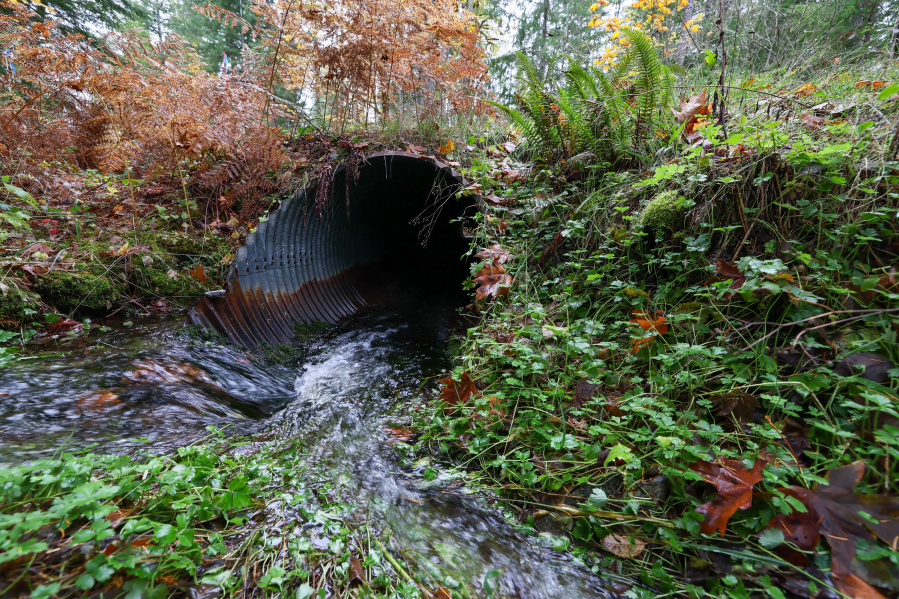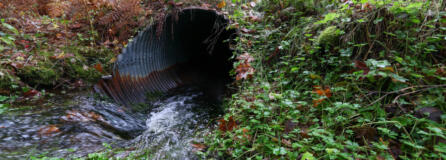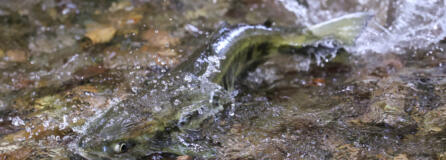SEATTLE — Washington is spending nearly $1 million a day on a mammoth project to help salmon migration.
A federal judge, ruling in a lawsuit brought by Washington tribes, ordered the state to restore habitat by tearing out hundreds of poorly designed concrete or metal pipes under highways that block salmon as they swim upstream to spawn.
But Washington hasn’t coordinated with a tangle of other public and private parties who own blockages on those same streams, so in some cases the state is spending millions to restore parts of streams that salmon may not be able to reach.
The Seattle Times analyzed the state’s own project reports and found that for every barrier the state removes on a waterway, nine others upstream and two downstream partially or fully block fish migration. Most of those other barriers are not scheduled to be removed.
And now as the state rushes to meet a 2030 federal court deadline, it has no clear way of knowing whether all the construction is helping.
- 1. Why all this road construction for fish?
Beneath highways and roadways lie concrete or metal pipes called culverts, which carry water but are often impassable for migrating salmon.
The Washington State Department of Transportation (WSDOT) has completed construction projects to remove 146 culverts and other barriers and open the path for salmon heading upstream to spawn and for young salmon to return to the sea.
In many cases, that has meant tearing up roadways so the streams beneath them can be restored to more fish-friendly habitat. And that has meant a lot of big highway projects, including a $110-million set of four new bridges on or near I-90 in Bellevue.
Culverts can look like a corrugated metal tube or a concrete tunnel. They’re typically found under roads, parking lots, private driveways and other man-made structures.
Culverts have been used for decades, and if designed properly they allow fish to pass through without problems. But others are too steep, too narrow or have other flaws. Nearly 80 years ago, the state attorney general found that fish-blocking culverts violated state law.
Some culverts let a fraction of fish through, while others stop every single salmon from passing.
- 3. Why are culverts being replaced now?
In 2013, a federal judge sided with 21 Western Washington tribes who argued the salmon-blocking culverts violated their treaty fishing rights. The judge issued an injunction, ordering the Washington State Department of Transportation (WSDOT) to replace its salmon barriers blocking the most habitat by 2030.
Construction ramped up dramatically in the past two years as the Legislature finally devoted significant funding. WSDOT has repaired or replaced a total of 146 injunction culverts, and it has identified 281 more (some of which are under construction) that would open up 90 percent of the habitat above those priority culverts by 2030.
But WSDOT is singularly focused on fulfilling the terms of the court order, without questioning whether some big projects even make sense for salmon — rendering some state investments ineffective or even worthless.
And the cost keeps rising.
- 4. How much will this cost?
This is Washington’s most expensive program ever to recover salmon.
The latest estimate for all this construction has basically doubled from $3.8 billion to as much as $7.8 billion — roughly the cost of replacing the Highway 99 viaduct along Seattle’s waterfront, twice over, plus change. Or you could buy two new electric ferry fleets.
- 5. Where will the money come from?
The work is primarily funded by Washington state taxpayers, with a portion coming from federal sources.
Washington lawmakers are growing skeptical. Two years ago, lawmakers approved their largest single contribution to WSDOT culvert replacements — $2.4 billion in the 2022 Move Ahead Washington package. Lawmakers have yet to figure out how to fund the remainder of the construction.
As costs soar, the Inslee administration isn’t asking this simple question: Is it actually helping salmon?
In our investigation spanning a year, we reviewed all the hydraulic reports from WSDOT construction projects, traversed Western Washington to visit culvert sites, studied state reports on fish counts and read through thousands of pages of court records to understand the foundations of the federal court order.
As we investigated how the state should most effectively spend taxpayer dollars to save iconic and declining salmon species — while upholding tribal treaty rights — we consulted with a range of experts, tribal leaders, nonprofit organizations, scientists, agency officials and others to understand the nuances of the federal injunction and how it complicates effective salmon recovery.
It’s not a question of why the state is doing this work, but how. The complexity lies in which culverts the state targets first, and how it’s working with local governments and the tribes on solutions.





